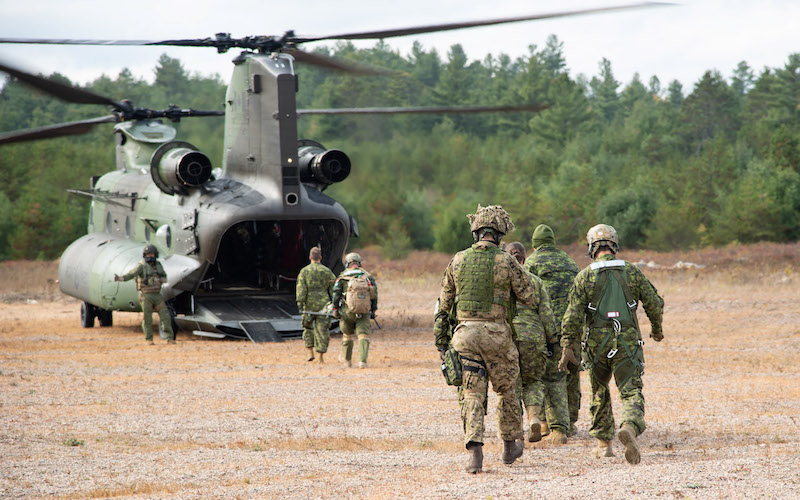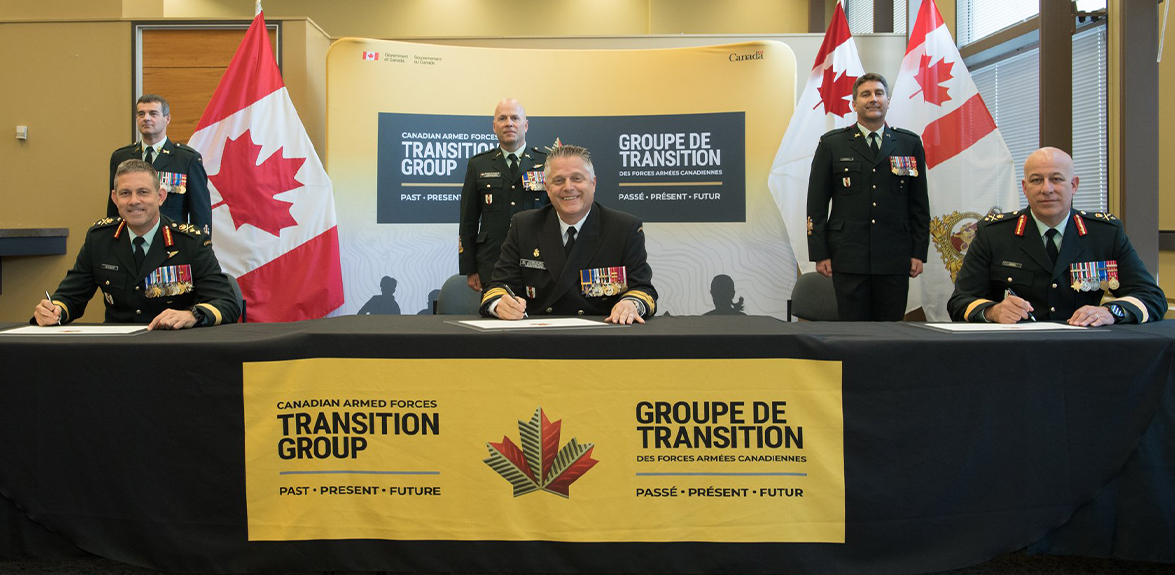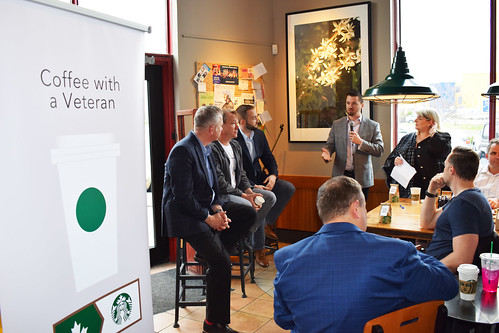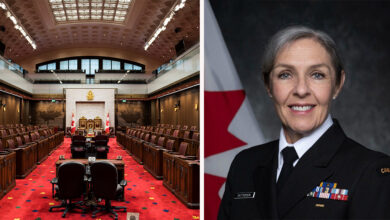
There is one single truism applicable to every military member. One day each of us will become a civilian once again. The questions are when and how.
It’s never too early to think about your exit plan. Conversely, there is a point at which time it is too late to fully take advantage of all the resources. I started to think about my transition after 10 years in uniform, and I ended up serving for just over 20 years.
This shaped how I pursued my desired career path and informed the timing of my eventual release. Pay attention to the decisions that will impact you and your family long-term.
PRE RELEASE: WHEN

Please credit: Pte Sarah Morley, Canadian Armed Forces photo
There are many factors that influence when a service member releases: professional, personal, family, financial, medical, etc. I retired when I did to pursue a better family balance, to launch a second career, knowing that I was covered financially with my pension, and I needed a change of professional scenery. What was most important is that I was in control of the decision-making process.
-
Under New Management MaxSys Sold to Agilus: What the Future Holds
November 17, 2024 -
Building a Personal Network Outside the Military
June 25, 2024 -
Veterans Sharpen sharpen Culinary Skills
December 1, 2022 -
Rear Admiral Rebecca Patterson Selected for Senator
November 26, 2022 -
Crafting the Perfect Mug of Ale
September 23, 2022
James Mattis (USMC General retired) once wrote a fellow Marine that “the Corps would be completely satisfied if a Marine gave 100 per cent effort and completely dissatisfied if they could only give 99 per cent.”
Military service is challenging with its own set of stressors—on the member and the family. Service members must strive to hold the various forces that pull them in a creative tension. I was no longer able to do that.
When I could no longer give 100 per cent, it was time for me to leave. The troops and your brothers- and sisters-in-arms deserve no less. Be all-in. It’s the only way to soldier. It’s the only way to do anything properly. And when it’s time to go, don’t linger—it’s a drain on your purpose. It’s bad for the soul.
-
-
- What factors will influence the timing of your transition?
- Are you still capable of giving 100 per cent? Are you giving it?
- Are you having regular conversations with your future with your family?
-
PRE RELEASE: HOW

Foreground (left to right): MGen Misener, VAdm Edmundson, BGen Cross; Background (left to right): CWO Lapointe, CWO Geoffroy, CWO Rondeau
Own your part in the process. There are many agencies, the CAF Transition Group amongst them, that are there to help. They are the experts in the process and the services available. It is your future, so own it. Do your research, ask your questions, and help them help you.
I attended two SCAN seminars: five years and one year before retiring. The first seminar was for general information and the second one to devise a detailed plan.
I emailed the Treasury Board Pension Centre to get definitive answers on my pension eligibility and rough calculations. The answers matched what DND told me. However, I did not leave this understanding to chance. It was my financial future. Do the math and consider all your options from lump-sum payout to an annuity.
I ensured that all my medical appointments were booked and that my release was contingent on finalizing any required treatments. This took three months and was worth the wait.
How well your transition occurs is largely up to your involvement in the process. It’s your life. Don’t let anyone make you feel uncomfortable about the planning and asking questions.
-
-
- Are you ready to own the process?
- Do you know about all the resources available to a transitioning military member?
-
POST RELEASE: WHY
Most people make the mistake of figuring out their next step by determining what they want to do. As Simon Sinek advises, Start with Why. Figure out your purpose. Why do you want to get out of bed in the morning? What are you passionate about? That should drive what you do and how you do it.
According to a senior CAF Transition Group officer, of the CAF members who transition into the civilian workforce, over 50 per cent look to switch jobs after only 18-24 months.
This occurs for many reasons: bad fit, incongruent culture, and values, the member took the first job that was offered, the member undervalued their worth, etc.
I made this mistake. Not fully understanding my own Why led to many problems in the first company I started with a partner. We were not aligned, and when it became apparent that we could not reconcile our differences, we decided to end the partnership.
It is only a failure when you fail to learn, and that experience taught me many lessons. The chief lesson was identifying and articulating the Why—both personally and professionally. In my case, that awareness did not change what I do, but it has significantly changed how I do it.
-
-
- What is your purpose in life?
- What do you want to do next, and most importantly, why?
-
POST RELEASE: WHAT
The best advice I can give you (and yet advice that I did not follow) is to take some time to transition. This provides the space to adjust and reflect—to answer the questions related to your purpose in life, identify opportunities, and to ensure that they are a good fit.
I am often asked if I miss the Army. It is not a simple answer. I do not miss what I would have been doing post-unit command as a staff officer at National Defence HQ. This is one of the reasons I left.
The aspects of military life that I would have missed, however, I was very deliberate about replicating: the camaraderie, mentoring, outdoor activities, physical fitness, going to the mess.

I joined the Treble Victor Group (dedicated to helping military veterans transition into the entrepreneurial and business world) and remain active in the Canadian Military Engineer Association. Surround yourself with people who share your values and value your stories. The onus is on you to maintain contact with your former colleagues.
-
-
- Have you purposefully built-in time to transition?
- What military and non-military groups resonate with you?
- Do you have the contact details of those colleagues with whom you wish to remain in contact?
-
CONCLUSION
We all voluntarily joined the CAF. While not all releases are voluntary, the more influence that you can exert over your transition, the better. Own the process and put in the effort to understand all your options.
Have the courage to move on when you can no longer give 100 per cent. Be patient and purposeful in determining your next steps. Replicate what you will miss.

















